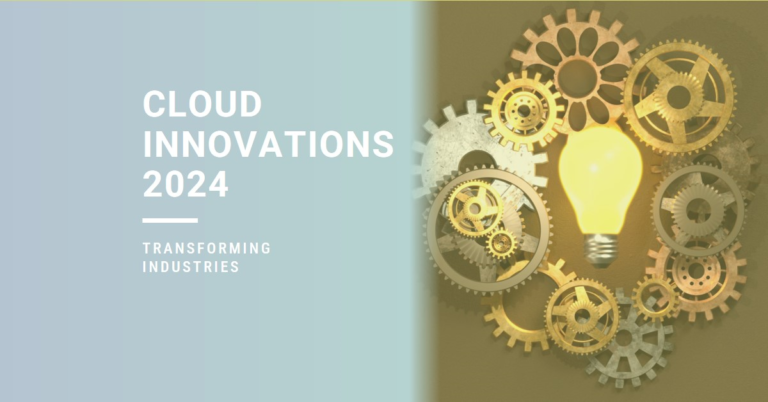In 2024, the landscape of cloud computing is set to undergo transformative changes, promising to enhance operational efficiencies across multiple industries. As organizations continue to navigate the complexities of digital transformation, cloud technology stands as a beacon of innovation, offering solutions that streamline processes, reduce costs, and bolster security. This article explores the cutting-edge innovations in cloud computing anticipated in the coming year and examines how companies like P99Soft are positioned to aid industries in harnessing these advancements.
Edge Computing: Bringing Data Closer to the Action
One of the most significant trends on the horizon is the expansion of edge computing. By processing data near the source rather than relying solely on centralized data centers, edge computing minimizes latency and speeds up data processing. This is particularly crucial for industries like manufacturing, where real-time data processing can lead to immediate decision-making on the production line, significantly enhancing operational efficiency.
According to Gartner, by 2024, more than 50% of enterprise-generated data will be created and processed outside the data center or cloud, up from less than 10% in 2019. This shift indicates a substantial move towards more localized and responsive computing solutions.
Serverless Architectures: More Flexibility and Lower Costs
Serverless computing, where businesses can build and run applications and services without managing the infrastructure, is set to grow. This model allows companies to focus on their core products without the overhead of managing servers, storage, and backup solutions. Industries like e-commerce and financial services, where demand can spike unpredictably, benefit particularly from the scalability and cost-efficiency serverless computing offers.
Market research from MarketsandMarkets forecasts the global serverless architecture market size to grow from USD 7.6 billion in 2020 to USD 21.1 billion by 2025, at a Compound Annual Growth Rate (CAGR) of 22.7% during the forecast period.
Artificial Intelligence and Machine Learning Integration
Cloud platforms are increasingly integrating AI and machine learning to provide more intelligent, automated solutions. These technologies are anticipated to revolutionize sectors such as healthcare, finance, and customer service by providing enhanced data analysis and predictive insights. AI in cloud computing can automate routine tasks, predict maintenance issues before they occur, and offer personalized customer experiences.
A report by Deloitte states that AI-fueled cloud computing is expected to exceed $89 billion in global market value by 2025. This growth reflects the increasing reliance on AI to drive decision-making processes in cloud environments.
Multi-Cloud and Hybrid Cloud Solutions
The adoption of multi-cloud and hybrid cloud environments is expected to accelerate in 2024. These configurations offer businesses greater flexibility by allowing them to distribute workloads across multiple environments, reducing the risk of vendor lock-in and increasing resilience against outages.
Research from Flexera’s 2023 State of the Cloud Report highlights that over 90% of enterprises have a multi-cloud strategy, and 80% have a hybrid cloud strategy, underscoring the importance of versatile cloud deployment models.
Enhanced Security Protocols
As cloud technologies advance, so do the strategies to secure them. Next year, expect to see more sophisticated security measures embedded into cloud services, including more advanced encryption methods and AI-driven threat detection systems. These enhancements are critical as cyber threats become more complex and pervasive.
P99Soft is at the forefront of these innovations, offering tailored cloud computing solutions that enhance operational efficiency across multiple sectors, including banks and insurance companies. Their expertise in deploying scalable, secure cloud infrastructures allows businesses to leverage the latest technological advancements while focusing on their core operations.
Frequently Asked Questions
- What is edge computing, and how does it improve operational efficiency? Edge computing processes data near its source, reducing latency and allowing for real-time data analysis, enhancing decision-making processes across industries.
- How does serverless computing reduce operational costs? Serverless computing eliminates the need for businesses to manage physical servers and other infrastructure, reducing overhead costs and allowing them to scale operations seamlessly.
- Can AI integration in cloud computing be customized for specific industry needs? Yes, AI and machine learning models can be tailored to address specific challenges within industries, enhancing everything from predictive maintenance to personalized customer interactions.
- What are the benefits of a multi-cloud strategy? A multi-cloud strategy offers businesses flexibility, reduces dependency on a single vendor, and enhances disaster recovery and data redundancy capabilities.
- How are cloud technologies evolving to handle increasing cybersecurity threats? Cloud technologies are incorporating more robust encryption methods and AI-driven security protocols to detect and mitigate threats more effectively.
Conclusion
The innovations in cloud computing set for 2024 represent a significant leap forward in technology’s role in business efficiency. As these technologies evolve, they promise to bring about profound changes in how industries operate, delivering faster, more reliable, and secure services.
Also know Data Intelligence in Gaming: Boost Engagement 2024.



